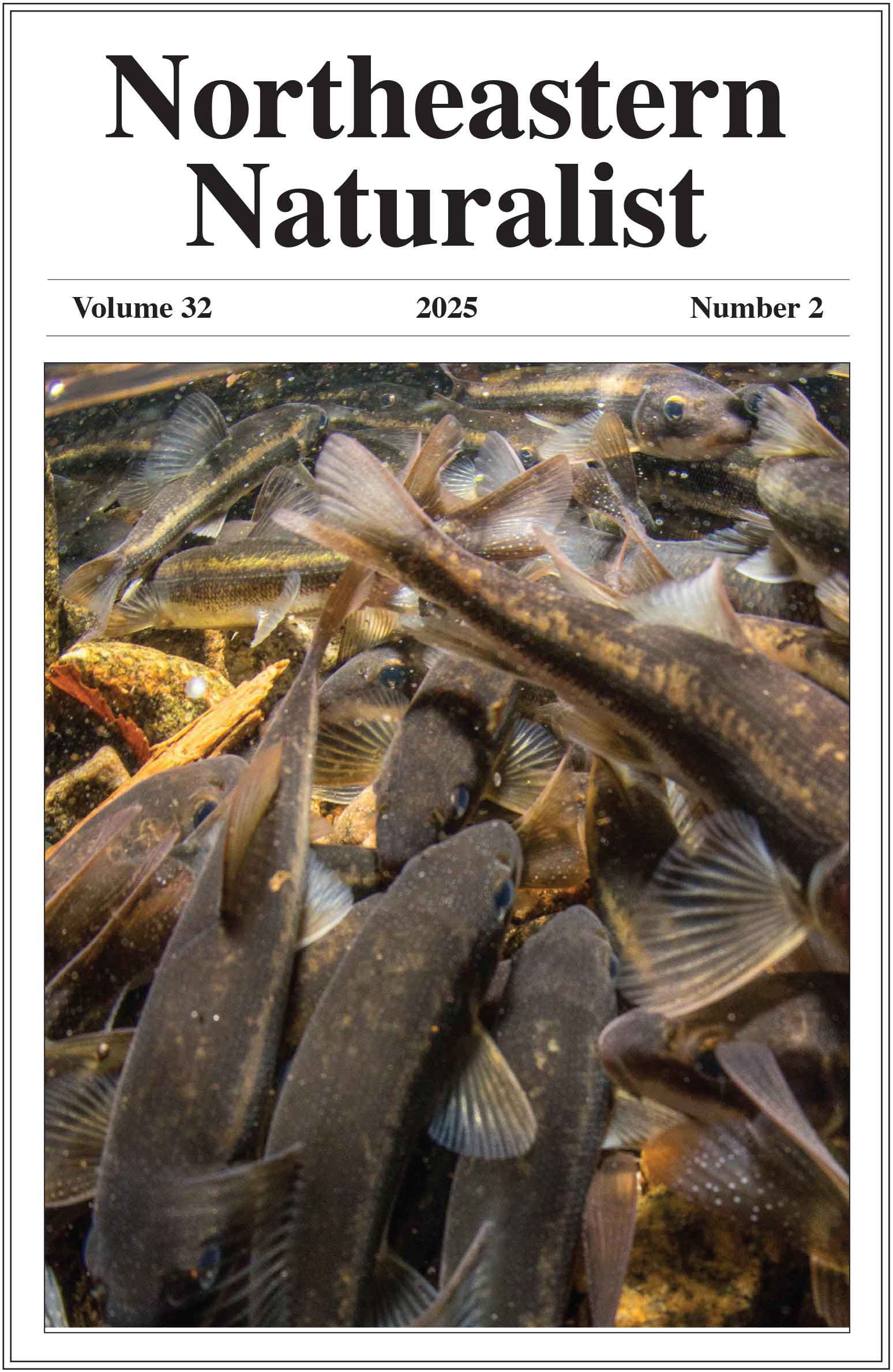A Natural History of Northern Maine, USA, since Deglaciation
Ronald B. Davis1,*, Stephen A. Norton2, Cynthia M. Kuhns3, and William A. Halteman4
1School of Biology and Ecology and Climate Change Institute, University of Maine, Orono, ME 04469. 2School of Earth and Climate Sciences, University of Maine, Orono, ME 04469. 3Maranacook Community High School, Readfield, ME 04355. 4Department of Mathematics and Statistics, University of Maine, Orono, ME 04469. *Corresponding author.
Northeastern Naturalist, Volume 28, Monograph 19 (2021): 1–76
Abstract
We present a multi-proxy, postglacial paleorecord from Chase Lake, a 1.63-km2 drainage lake in northern Maine. This record, along with published paleorecords from several smaller lakes and hollows allow us to synthesize a long-term natural history of the area. Northern Maine is unique in the northeastern USA as it was the last part to be deglaciated and has maintained a relatively cold climate and boreal flora. The diverse lake/catchment sites differed in dates of deglaciation (13,700 to 13,200 cal yr BP) and the duration of the ensuing tundra period (1700 to 2900 cal yr). A dry, cold climate slowed plant establishment. Chase Lake had low aquatic productivity until the end of the tundra period. The Chase record shows that afforestation began ~10,600 cal yr BP, ~1000 years after the end of the Younger Dryas, and 700–1400 years later than at the other sites, and was completed by 9200 cal yr BP. Initial open woodlands of Picea (spruce) (largely P. mariana [Black Spruce]), Abies balsamea (Balsam Fir), Larix laricina (American Larch), Pinus (pines), Betula papyrifera (Paper Birch), and Populus (poplars) gradually became closed forest. Climate substantially warmed at the outset of afforestation. Despite evidence of an increasingly wetter climate, as indicated by rising water levels at 2 seepage lakes, fire was common for the first 2000–3000 years of woodland and forest history, probably enabled by summer droughts. This fire period is not matched in intensity and duration later in the paleorecords. At Chase, afforestation was accompanied by an increase in insect remains including microlepidopteran defoliators, and these remained abundant for the rest of the record. Major increases of aquatic biota accompanied afforestation. Spruce greatly decreased by ~7500 cal yr BP as northern hardwoods and Tsuga canadensis (Eastern Hemlock) increased, but hemlock abundance remained low compared to farther south in the Northeast. From 7500 to 1300 cal yr BP, temperate tree taxa were at maximum abundances. Spruce and fir were at postglacial minima 6250–4400 cal yr BP. A relatively dry period 5300–3300 cal yr BP nearly eliminated hemlock at the outset, when it was replaced largely by Fagus (beech). Hemlock’s partial recovery late in that period was accompanied by increasing Thuja (cedar) and decreasing Quercus (oak), the beginning of climate cooling and resumption of wetter conditions. This climate trend intensified after 3300 cal yr BP, resulting in further increases of cedar, spruce (largely Picea rubens [Red Spruce] and Black Spruce) and fir, which reached greatest postglacial abundances in the most recent 1000–1500 years. Long-term natural histories of selected woody taxa provide insights on ecological factors accounting for changes in species abundances. For example, the flourishing of cedar in the late-Holocene could have been abetted by increasing winter severity that eliminated Odocoileus virginianus (White-tailed Deer), heavy browsers on cedar. The geochemical history of the Chase catchment demonstrates ongoing weathering and depletion of several metals, resulting in enrichment of soils with silica. Several changes in metal concentrations are linked to afforestation, including increased transport to the lake sediment of Ca, K, Al, Fe, Cu, and Zn in/on increased organic detritus. Accumulation rates of metals and organic materials in the Chase Lake sediment were probably heavily influenced by physical processes including catchment erosion, shifts in sediment sources, and in-lake focusing.
![]() Download Full-text pdf (Accessible only to subscribers. To subscribe click here.)
Download Full-text pdf (Accessible only to subscribers. To subscribe click here.)
Access Journal Content
Open access browsing of table of contents and abstract pages. Full text pdfs available for download for subscribers.
Issue-in-Progress: Vol. 32 (3) ... early view
Check out NENA's latest monograph and Special Issue:













 The Northeastern Naturalist is a peer-reviewed journal that covers all aspects of natural history within northeastern North America. We welcome research articles, summary review papers, and observational notes.
The Northeastern Naturalist is a peer-reviewed journal that covers all aspects of natural history within northeastern North America. We welcome research articles, summary review papers, and observational notes.